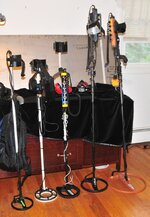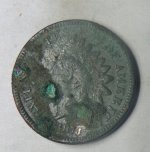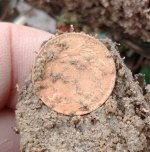Take two hypothetical, fairly busy tourist beaches. They are both miles long and relatively wide with pockets of greater activity and the occasional upscale resort. There is WAY too much sand to thoroughly cover all areas between tidal swings. It is summertime and conditions are sanded in with few obvious cuts or troughs. Recent drops are really the only ticket. Both beaches slope very gradually. There is one big difference between them: one has a 3 foot average tidal swing, while the other has an 8 foot average tidal swing. As a consequence, one has LOTS more wet sand than the other. That sand both appears and disappears at a faster rate due to the greater tidal flow. Where you stand with your toes in the surf at the average low tide is 8 feet deep at the average high tide. Is there any difference in the way you would approach detecting the two beaches? Would you choose one type of machine over another? Where would you spend your time in order to maximize your potential? There is competition from other detectorists and most gold dropped in the water probably will slip beyond detection range in just a day or so...
Last edited:
Upvote
0












